
What Is The Temperature Danger Zone All You Need Infos
Historically, the "danger zone" was not mentioned in the 1952 edition of Sanitary Food Service, the Public Health Service's (PHS) guide for foodservice personnel training, but it was stated as 60C to 7.2C (140-45F) in a 1969 revision of this guide. [ 1-2] The term, defined as 60C to 4.4C (140-40F), did appear, however, in 1956 in a.
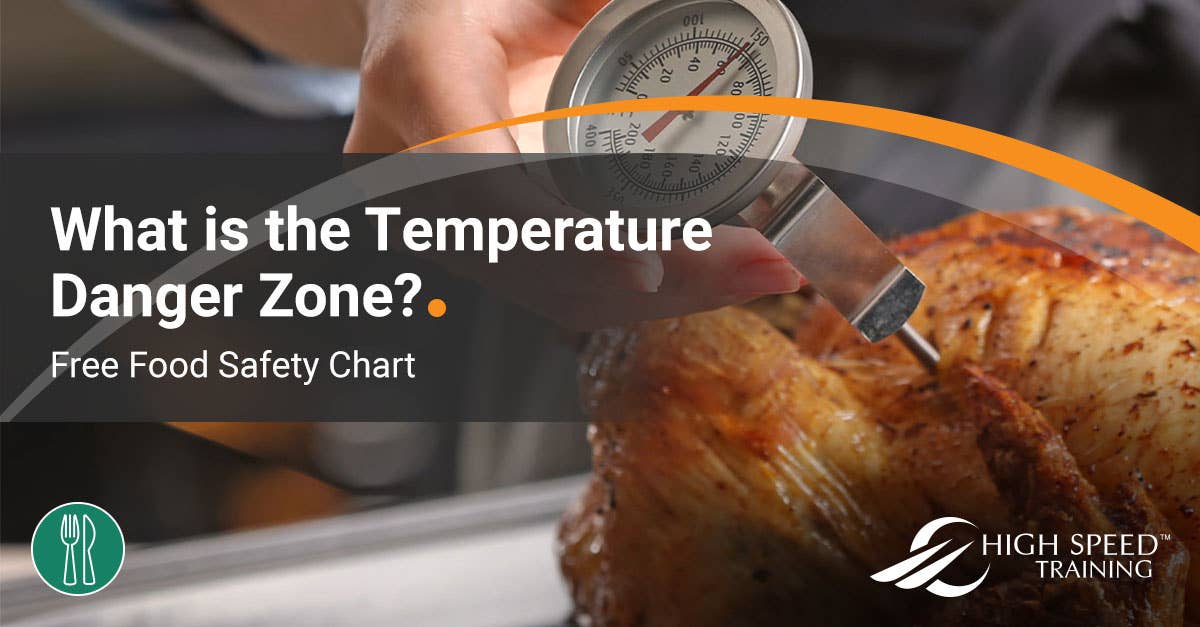
What is the Temperature Danger Zone? Free Chart
This range of temperatures is often called the "Danger Zone." Keep Food Out of the "Danger Zone" Never leave food out of refrigeration over 2 hours. If the temperature is above 90 °F, food should not be left out more than 1 hour. Keep hot food hot—at or above 140 °F.
What Is The Temperature Danger Zone All You Need Infos
Temperature Danger Zone The temperature range between 5°C and 60°C is known as Temperature Danger Zone. This is because in this zone food poisoning bacteria can grow to unsafe levels that can make you sick. Keeping cold food cold Keep your fridge below 5°C. At these temperatures most food poisoning bacteria stop growing or they grow slowly.
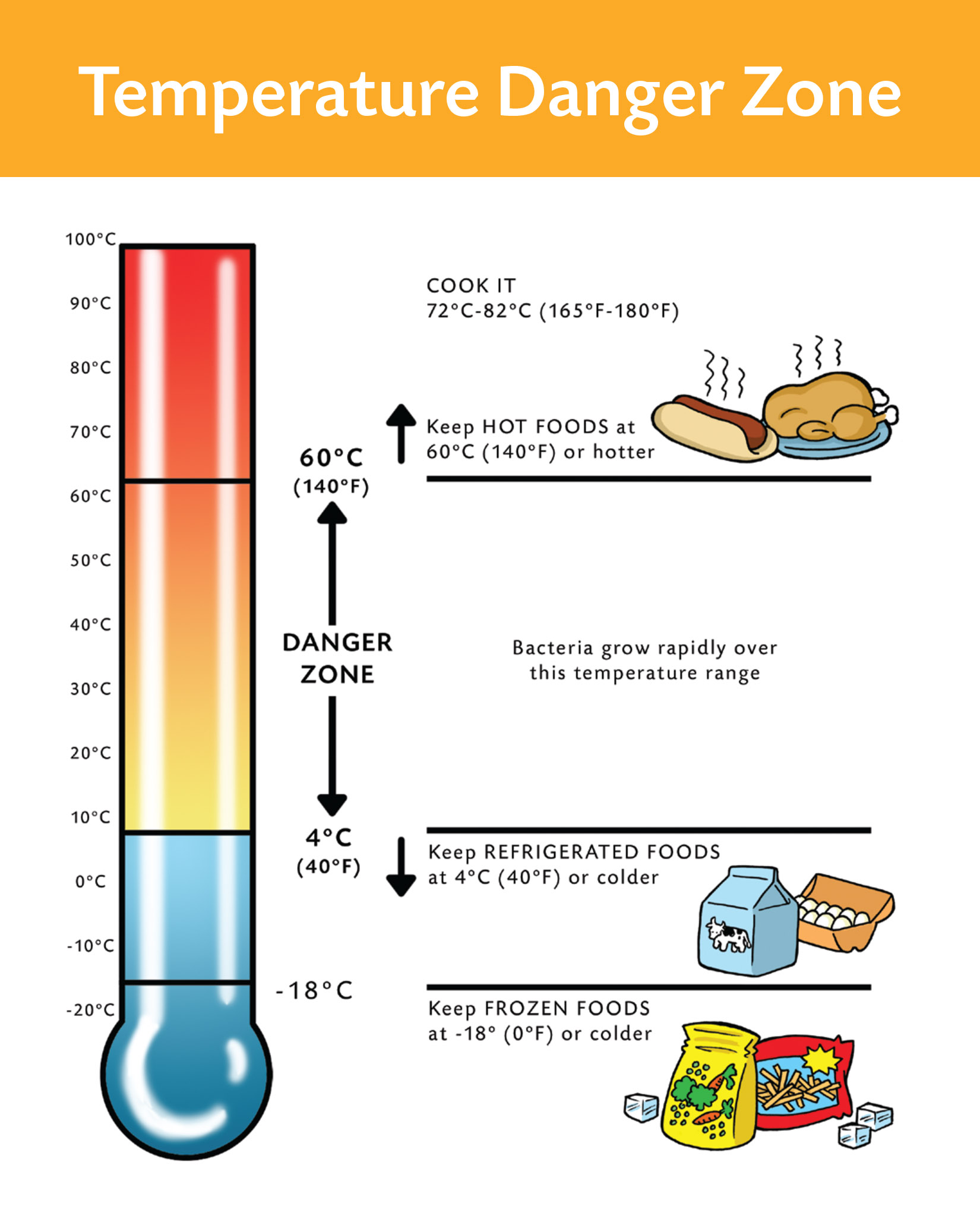
Temperature Danger Zone Pac Food
Time temperature abuse is the act of allowing foods to stay in the temperature danger zone of 41 to 135 degrees Fahrenheit. Along with cross-contamination, time temperature abuse is a common source of foodborne illness, making it a major health code violation. Foods may become time-temperature abused in three ways:

Temperature Danger Zone Servsafe Westchester
The temperature danger zone is a range of temperatures where it's unsafe for food to stay at for so long since it represents an ideal environment for bacterial growth. As per the USDA and ServSafe, this range of temperatures is between 40°F (4.4°C) and 140°F (60°C).
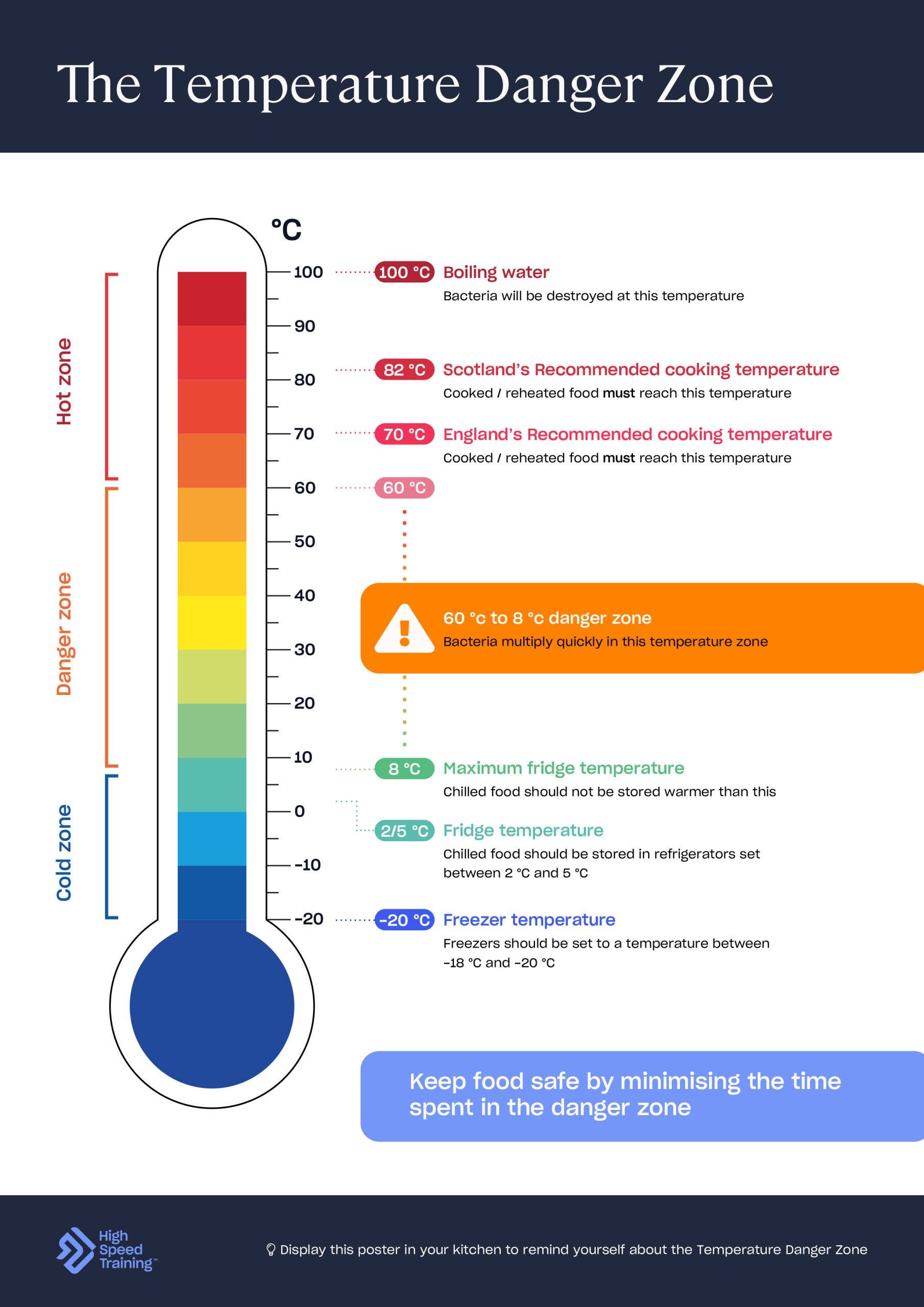
What is the Temperature Danger Zone? Free Food Safety Chart (2023)
The Danger Zone is the temperature range between 40 °F (4.4 ºC) and 140 °F (60 ºC) in which bacteria can grow rapidly. To keep food out of the Danger Zone, keep cold food cold, at or below 40 °F (4.4 ºC) , and hot food hot, at or above 140 °F (60 ºC). Keep cold food in the refrigerator, in coolers, or in containers on ice.
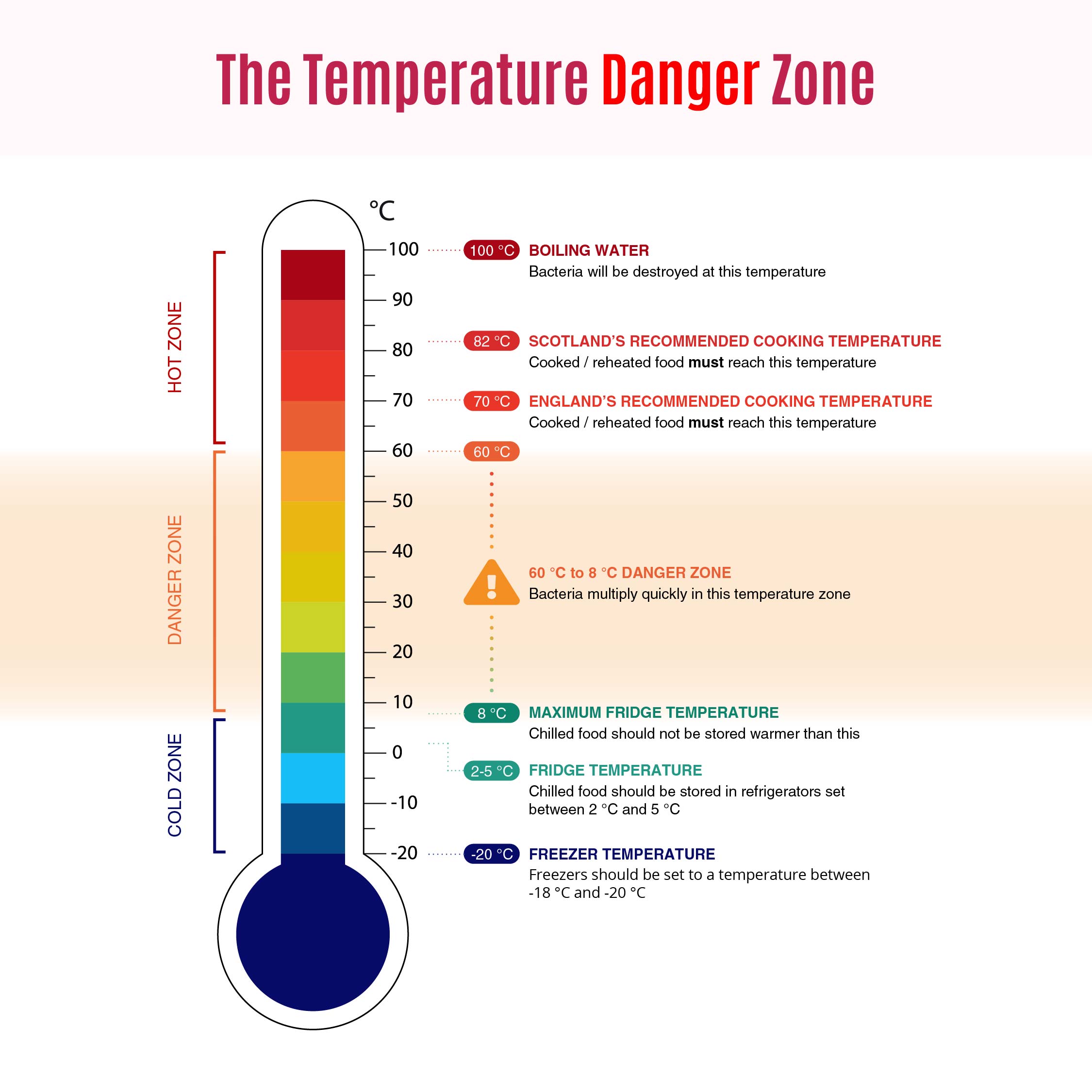
What is the Temperature Danger Zone for Food? Chart Included
What is the Temperature Danger Zone The USDA calls the range between 40°F and 140°F (4°C and 60°C) the "Temperature Danger Zone" (TDZ) because it is the range in which harmful bacteria multiply quickly. What do we mean by "multiply quickly?" We mean doubling in as little as every 20 minutes.

Looking to take your ServSafe Certification and a professional food handler? This helpful
As the name suggests, the danger zone refers to a temperature range at which it is dangerous for foods to be held. That range is between 40°F and 140°F. Why So Dangerous? Bacteria grow rapidly between 40°F and 140°F and, under the right circumstances, they can double in amount nearly every 20 minutes.

What Is the Temperature Danger Zone? Food Safety 101 Smoked BBQ Source
62 degrees C - Pork, lamb, veal, beef, steaks, and game meat. 57 degrees C - fruits, vegetables, grains, and legumes. Anything below the range above is considered the food danger zone. Make sure to avoid this zone as much as you can or try to limit the amount of time that the food is kept in this range. When monitoring the temperature of.

8 Things You Should Know About Food Safety Delishably
The temperature danger zone is the range at which most pathogenic microorganisms thrive and optimally multiply, thereby increasing the risk of foodborne illnesses. This temperature range is generally recognized within 40°F and 140°F (5°C and 60°C, respectively).
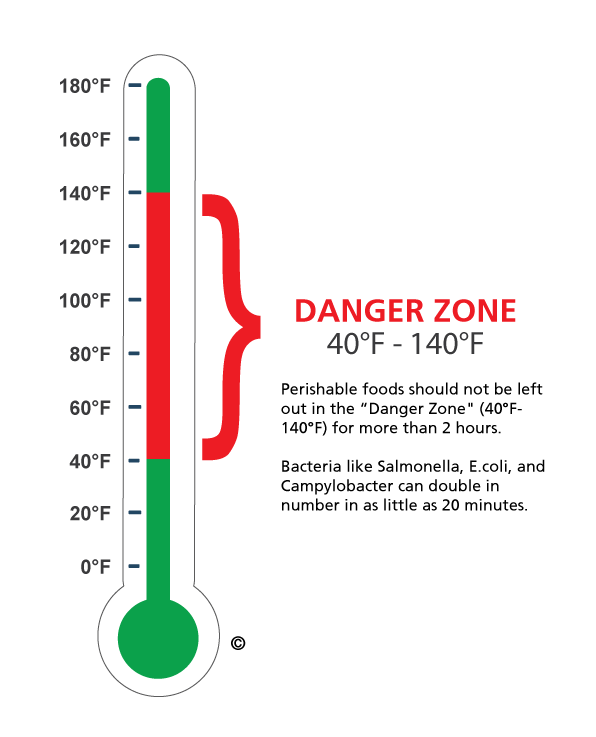
Safe Food Temperatures and the "Danger Zone"
What is the Temperature Danger Zone? It is called a temperature "danger zone" for good reason. Harmful bacteria multiplies and grows at an extremely rapid rate between 40°F - 140°F (4.5°C - 60°C).
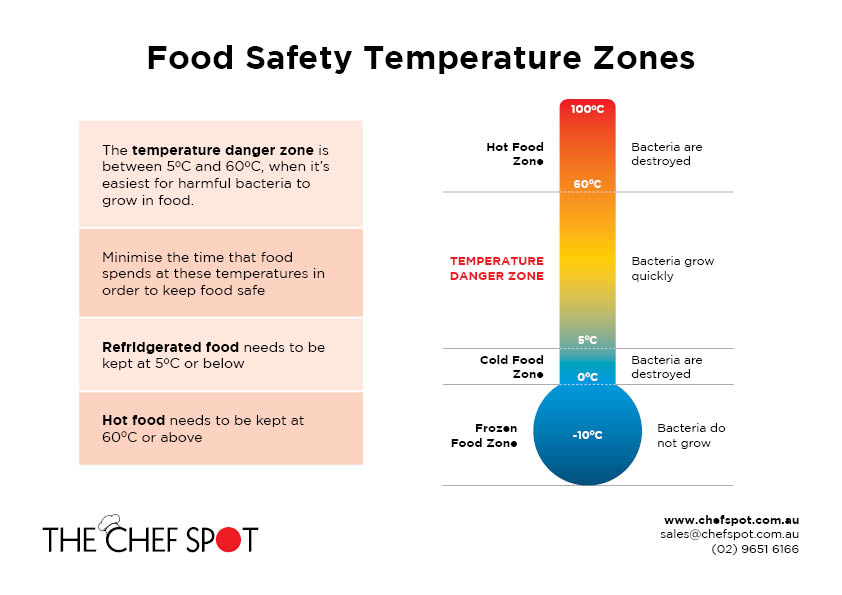
What Is The Temperature Danger Zone All You Need Infos
Four Steps to Food Safety: Clean, Separate, Cook, Chill Español (Spanish) Print Following four simple steps at home—Clean, Separate, Cook, and Chill—can help protect you and your loved ones from food poisoning. Clean: Wash your hands and surfaces often. Germs that cause food poisoning can survive in many places and spread around your kitchen.
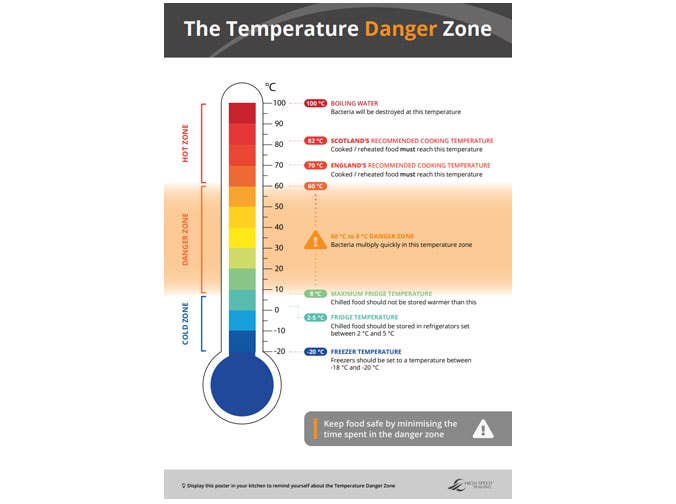
What is the Temperature Danger Zone? Free Chart
The danger zone is the temperature range in which food-borne bacteria can grow. Food safety agencies, such as the United States' Food Safety and Inspection Service (FSIS), define the danger zone as roughly 40 to 140 °F (4 to 60 °C).
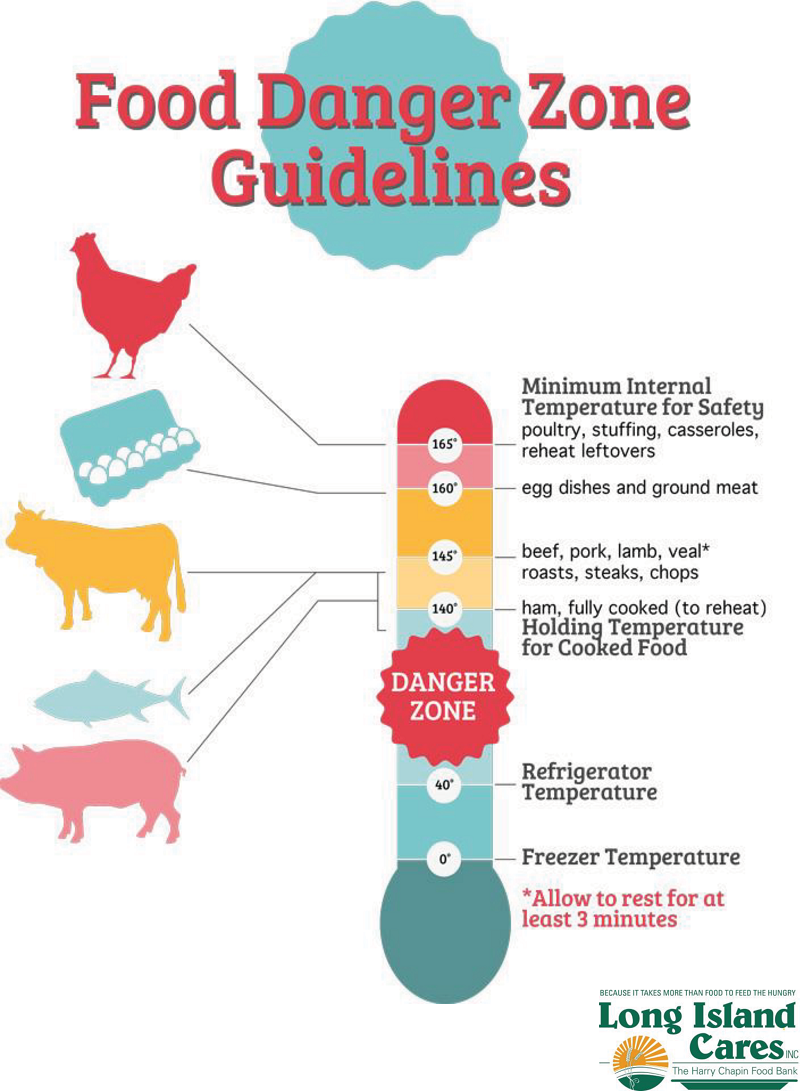
What Is The Temperature Danger Zone All You Need Infos
The danger zone is the temperature range that it is dangerous for food to be left at. This range is between 8°C and 60°C. Bacteria can grow rapidly between 8°C and 60°C and bacteria can double in amount every 20 minutes. The amount of time food spends in the danger zone must be minimised and food must also be moved through the danger zone.

Food Temperatures Food Safety Guru
The temperature danger zone is typically between 40°F (4°C) and 140°F (60°C). It is the temperature range in which bacteria thrive and multiply rapidly on food. Within this range, microorganisms can multiply every 20 minutes, significantly increasing the risk of foodborne illnesses.

What are Safe Temperatures for Foods in Restaurants?
The food temperature "danger zone" describes the temperature range at which bacteria start to grow on food. The Food Safety and Inspection Service (FSIS) considers 40 to 140 degrees Fahrenheit to be the food temperature danger zone. Bacteria grow most rapidly in this temperature range, doubling in number in just 20 minutes.